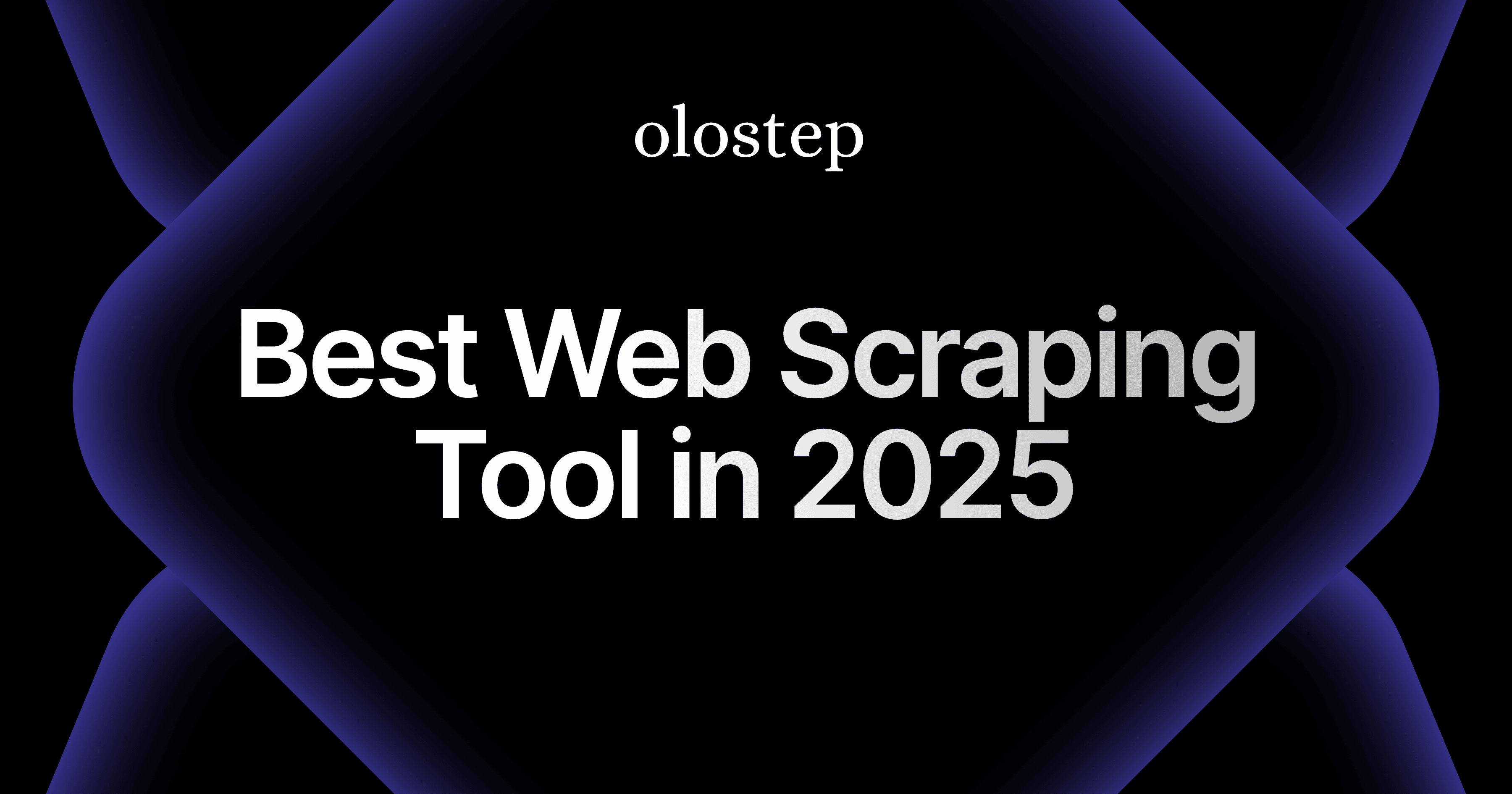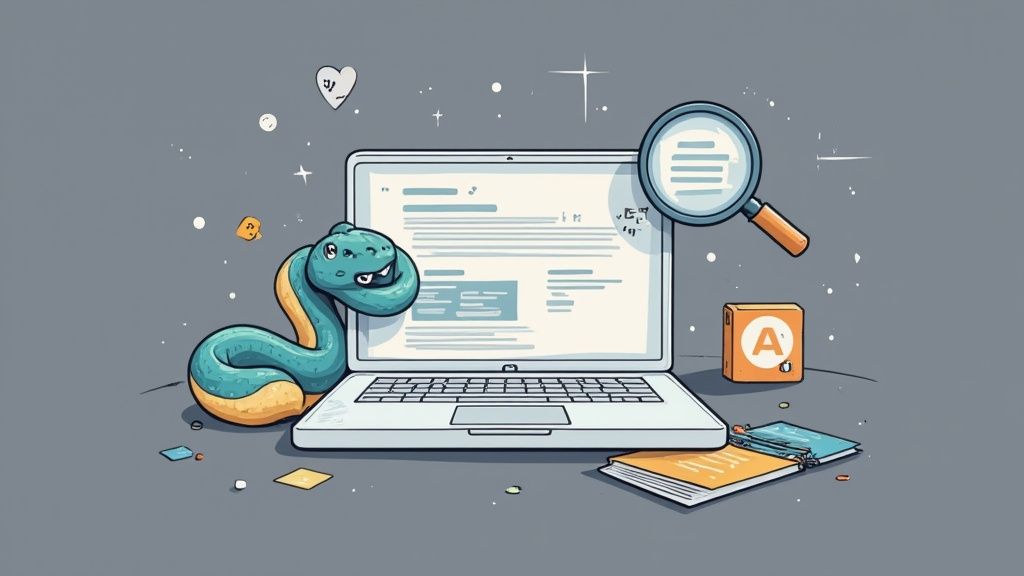Top Web Scraping Tools: Finding the Right Solution in 2025
The Evolution of Web Scraping Technology
The digital landscape is constantly evolving, and with it, the tools we use to extract and analyze web data. Web scraping has transformed from a niche technical skill into an essential business function for companies of all sizes. Whether you're tracking competitor prices, gathering market intelligence, or building a data-driven AI application, having the right web scraping solution can make all the difference.
But here's the thing – not all web scraping tools are created equal. The market has expanded dramatically in recent years, with solutions ranging from simple browser extensions to sophisticated APIs that can handle millions of requests. Finding the right fit for your specific needs requires understanding what's available and how different solutions stack up against each other.
Why Traditional Web Scraping Methods Fall Short
If you've ever tried to build your own web scraping solution, you know the challenges firsthand. What starts as a seemingly straightforward project quickly becomes complex when you encounter:
- Anti-bot measures: Websites increasingly deploy sophisticated detection systems
- CAPTCHAs: Those pesky "I'm not a robot" challenges that break your scraper
- IP blocking: Getting your access restricted after too many requests
- JavaScript-heavy sites: Dynamic content that doesn't appear in the source code
- Scaling issues: What works for 10 pages often breaks at 10,000
These challenges explain why many organizations are shifting from in-house solutions to specialized web scraping APIs and services. The cost of building and maintaining your own infrastructure often exceeds the investment in a reliable third-party solution.
Key Features to Look for in Web Scraping Tools
When evaluating web scraping tools, consider these essential capabilities:
1. JavaScript Rendering
Modern websites rely heavily on JavaScript to load content dynamically. According to recent studies, over 94% of websites use JavaScript to some degree. A capable web scraper must be able to execute JavaScript code just like a browser would, ensuring you capture all the content.
2. Anti-Detection Measures
This includes:
- Proxy rotation: Automatically switching IP addresses to avoid blocks
- Browser fingerprinting: Making requests appear to come from regular users
- Request throttling: Controlling the rate of requests to avoid triggering alarms
3. Data Extraction and Formatting
The best tools don't just fetch raw HTML – they transform it into usable formats:
- Structured data: JSON, CSV, or XML outputs
- Clean content: Removing ads, navigation elements, and other clutter
- Custom parsing: Ability to extract specific elements using selectors
4. Scalability
For serious applications, you need a solution that can handle volume:
- Batch processing: Running multiple requests simultaneously
- Crawling capabilities: Following links to extract data from entire websites
- Reliability: Consistent performance even at scale
Comparing Top Web Scraping Solutions
Let's look at how some of the leading web scraping tools compare across these key dimensions:
| Tool | JavaScript Support | Anti-Detection | Output Formats | Batch Processing | Pricing Model |
|---|---|---|---|---|---|
| Olostep | Full browser rendering | Residential IPs + rotation | Markdown, HTML, PDF, JSON | Up to 100K URLs in 5-7 min | Pay-per-successful request |
| Apify | Full browser rendering | Proxy integration | JSON, CSV | Actor-based system | Subscription + compute units |
| Bright Data | Full browser rendering | Extensive proxy network | Various formats | Yes, with limitations | Complex usage-based pricing |
| ScrapingBee | Full browser rendering | Proxy rotation | JSON, HTML | Limited batch support | API call credits |
Spotlight on Olostep: A Developer-Centric Approach
Among the various options, Olostep stands out with its developer-friendly API and impressive scalability and cost-effectiveness (up to 50%-90% cheaper compared to other solutions). The service offers three main functions that cover most web scraping needs:
Single URL Scraping
Perfect for extracting data from specific pages, Olostep's /scrapes endpoint transforms any URL into clean, structured data. What makes this approach powerful is the combination of full JavaScript rendering with residential IP addresses, ensuring you get the complete content even from heavily protected sites.
Website Crawling
For projects requiring data from entire websites, the /crawls endpoint can navigate through all subpages automatically. This is particularly useful for documentation sites, knowledge bases, or any multi-page content you need to extract. Unlike many competitors, Olostep doesn't require a sitemap to function effectively.
Batch Processing
Where Olostep truly shines is in its batch processing capabilities. The ability to handle up to 100,000 URLs in just 5-7 minutes puts it in a different league from many competitors. For large-scale data collection projects, this kind of throughput can be game-changing.
Real-World Applications of Web Scraping
The applications for web scraping are virtually limitless, but some common use cases include:
Market Intelligence
Tracking competitor pricing, product launches, and marketing strategies requires regular data collection from multiple sources. Web scraping tools automate this process, ensuring you always have the latest information.
Content Aggregation
News sites, review platforms, and content curators use web scraping to gather information from diverse sources, creating value through organization and analysis.
Training AI Models
Machine learning models need data – lots of it. Web scraping provides a way to build comprehensive datasets from publicly available information, fueling everything from sentiment analysis to image recognition.
Lead Generation
Sales teams use web scraping to identify potential customers by extracting contact information from business directories, social media, and company websites.
Overcoming Common Web Scraping Challenges
Even with the best tools, web scraping comes with challenges. Here's how to address some of the most common issues:
Legal and Ethical Considerations
Always check a website's terms of service before scraping. Some explicitly prohibit automated data collection. Additionally, respect robots.txt files and implement reasonable rate limiting to avoid overwhelming servers.
Data Quality and Consistency
Websites change their structure frequently, breaking scrapers that rely on specific HTML patterns. The best tools use AI and machine learning to adapt to these changes, maintaining data quality over time.
Handling Dynamic Content
Single-page applications and infinite scroll features can be particularly challenging. Look for tools that support scrolling, clicking, and other interactions before extracting content.
Cost Considerations: Build vs. Buy
When deciding between building your own scraping solution or using a service like Olostep, consider these factors:
In-House Development Costs
Building a robust scraper involves more than just writing code:
- Infrastructure for proxy management
- Systems to handle CAPTCHA solving
- Maintenance as websites change
- Scaling capabilities as your needs grow
Service Provider Advantages
Web scraping APIs offer several benefits:
- Predictable pricing based on usage
- Technical challenges handled for you
- Immediate scalability
- Regular updates to handle new anti-bot measures
For most organizations, the total cost of ownership for an in-house solution exceeds the subscription costs of a specialized service, especially when factoring in ongoing maintenance.
Getting Started with Web Scraping
If you're new to web scraping, here's a simple roadmap to get started:
- Define your data needs: What specific information are you trying to extract?
- Evaluate legal considerations: Ensure your project complies with terms of service and privacy laws
- Choose the right tool: Based on your volume, complexity, and budget requirements
- Start small: Test with a few pages before scaling up
- Monitor and adjust: Web scraping is an ongoing process that requires maintenance
Conclusion: Choosing the Right Web Scraping Solution
The best web scraping tool for your needs depends on your specific requirements. For developers building data-intensive applications, services like Olostep offer the perfect balance of power, flexibility, and cost-effectiveness. Their approach to handling the technical challenges of modern web scraping – from JavaScript rendering to proxy rotation – allows you to focus on using the data rather than fighting to collect it.
As websites continue to grow more complex and protective of their data, the value of specialized web scraping tools will only increase. By choosing a solution that handles the technical challenges while providing clean, structured data, you can unlock the vast potential of web data for your business or project.
Whether you're building an AI application that needs training data, tracking market trends, or aggregating content from multiple sources, the right web scraping tool can transform a tedious, error-prone process into a reliable data pipeline that drives your success.


